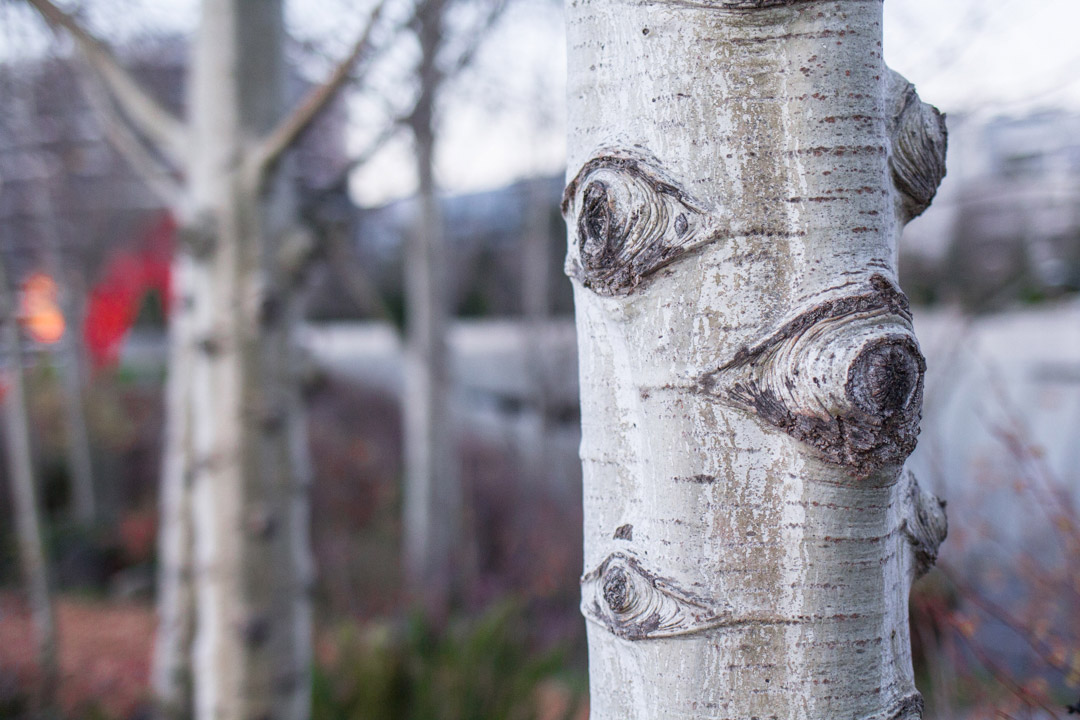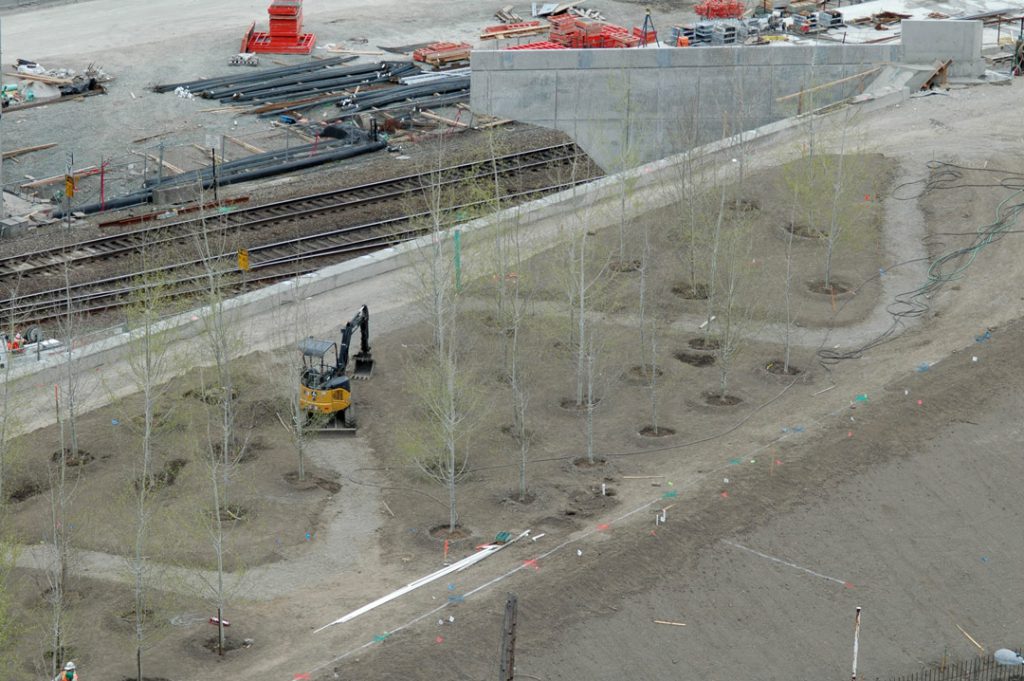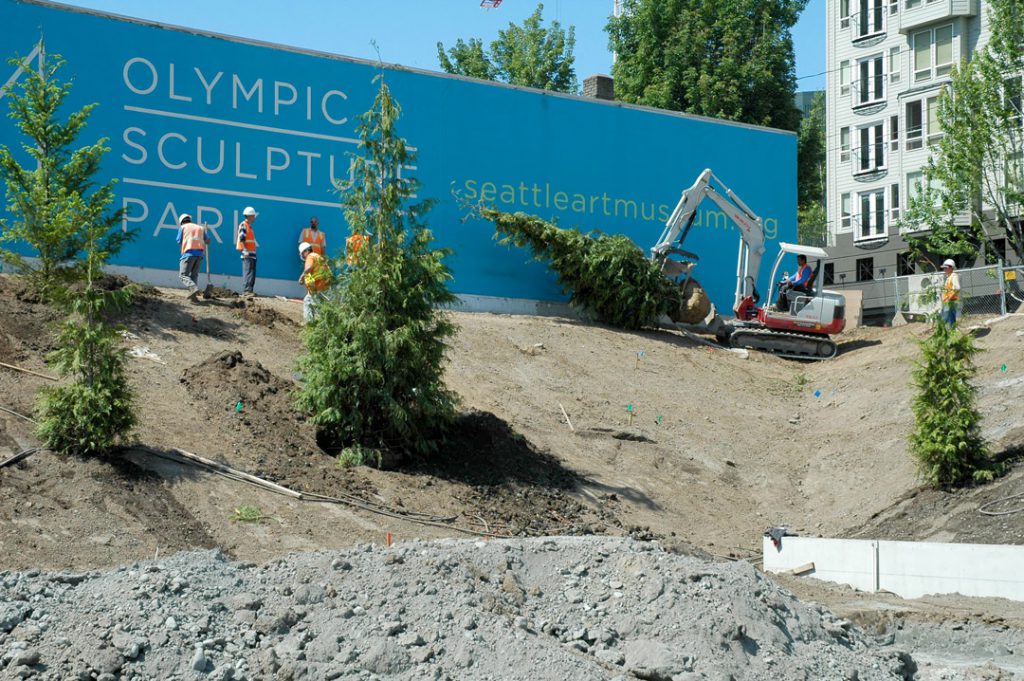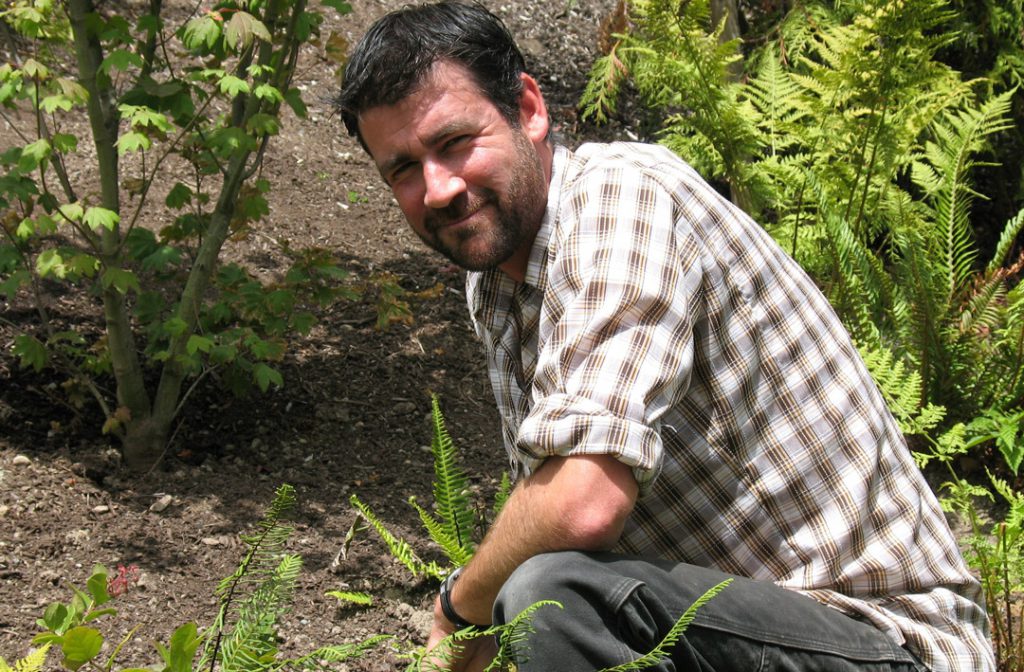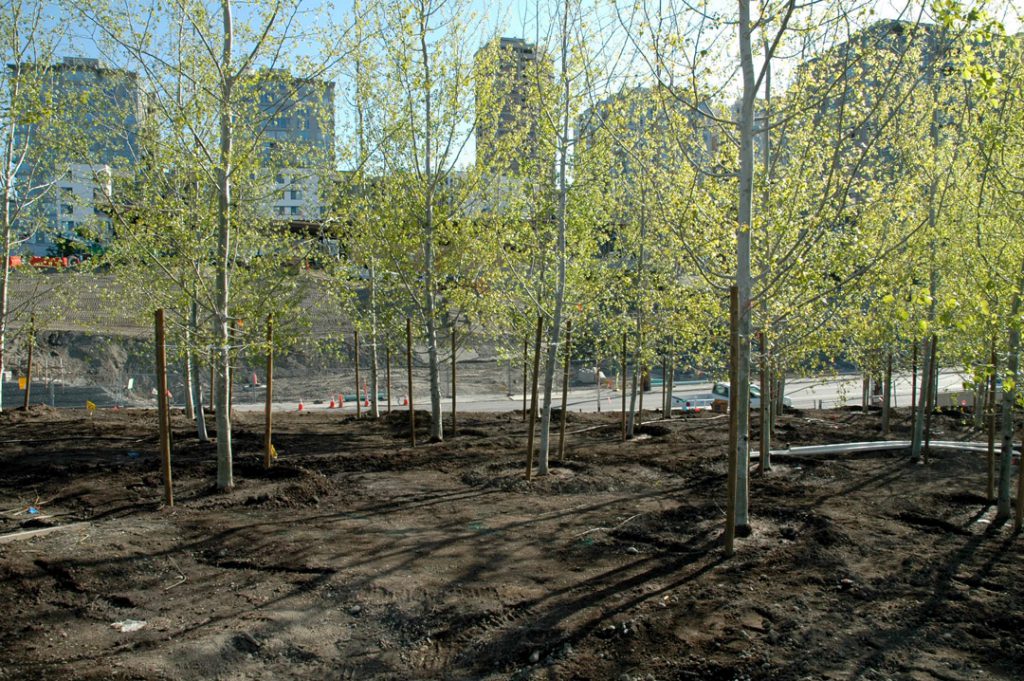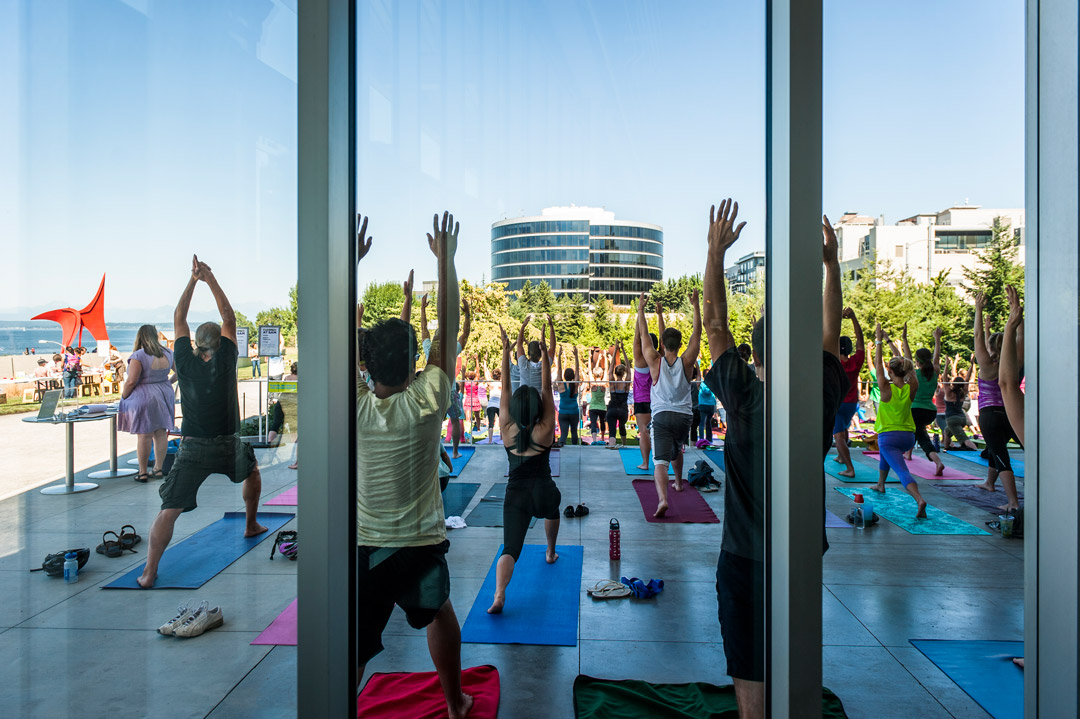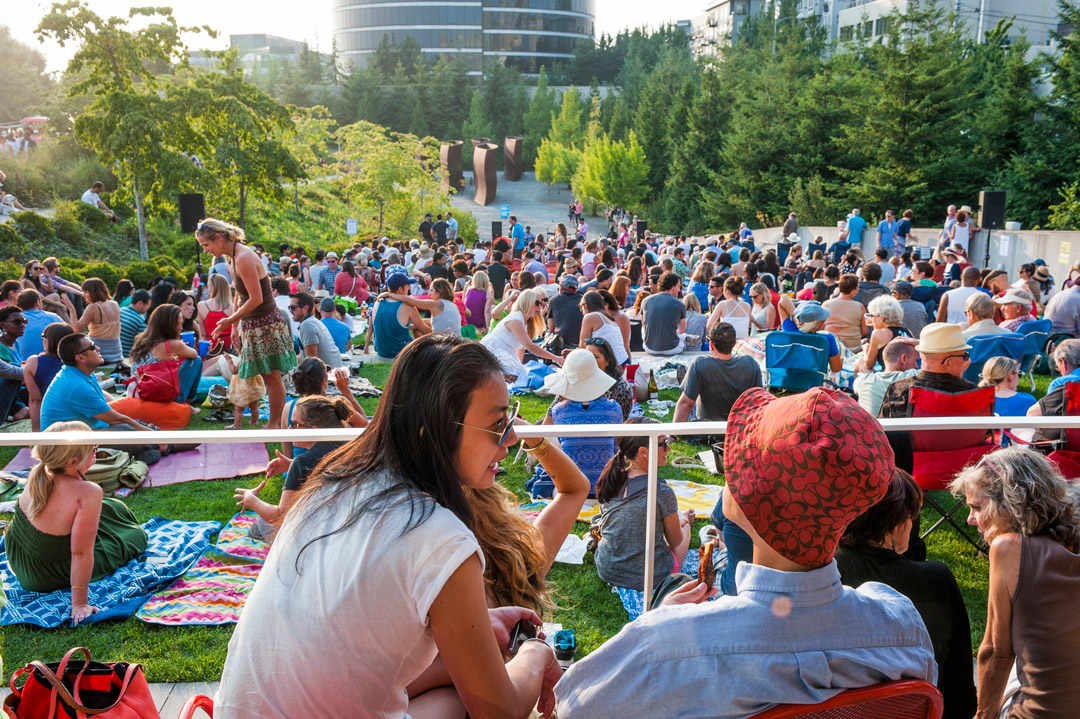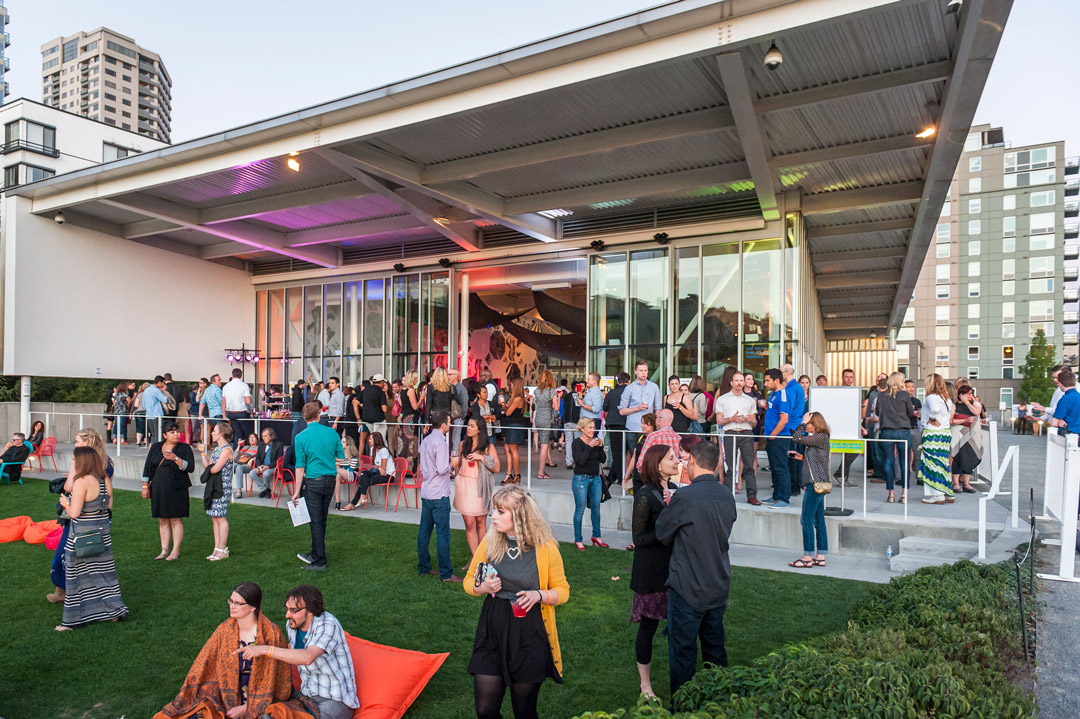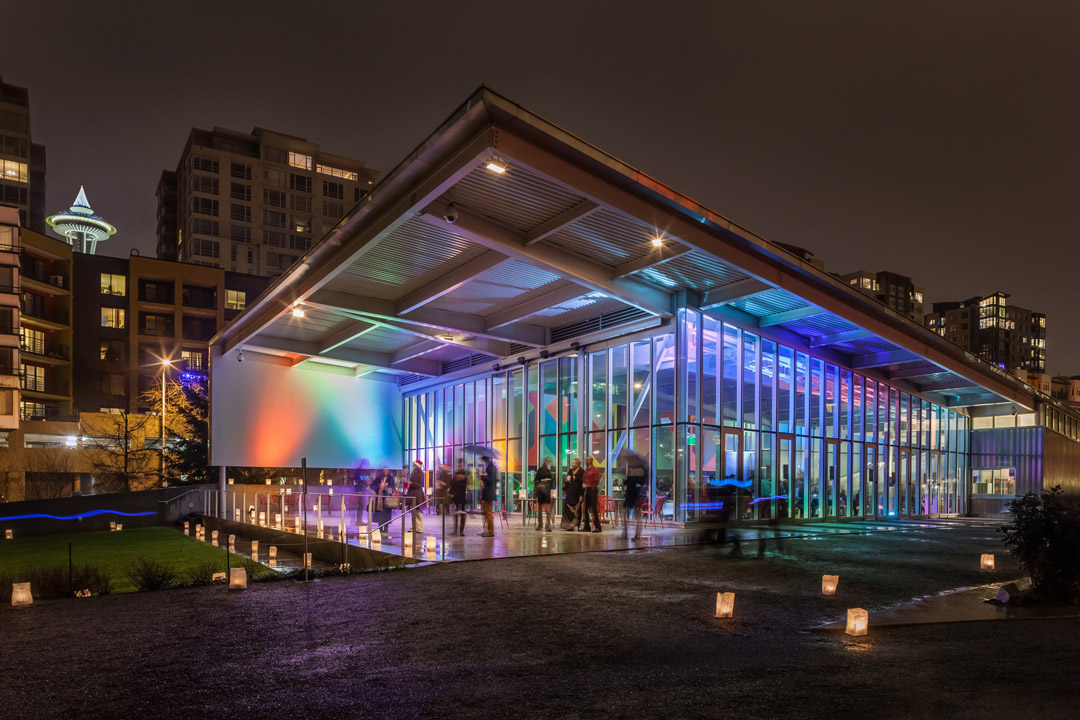Shaping New Sightlines: The Olympic Sculpture Park’s Evolving Landscape
Walking through the Grove at the Olympic Sculpture Park, it’s easy to forget you’re in a city. As the path descends, the flickering Aspen leaves, purple pops of Oregon grapes, and thick layers of ferns make the urban landscape feel suddenly distant. One could almost mistake the path for a hike outside city limits were it not for the landmark that emerges at the end: Tony Smith’s sculpture Stinger, a square, geometric fortress made of slick, black steel.
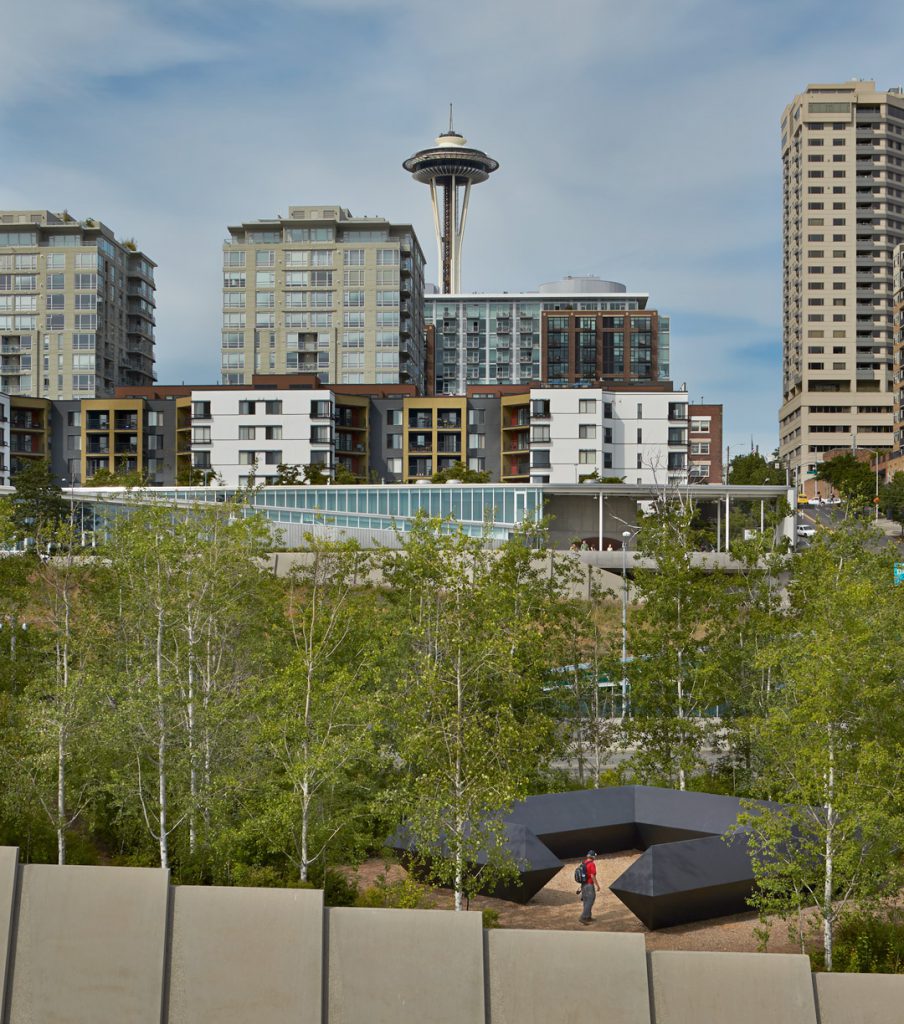 The Olympic Sculpture Park’s landscape merges artistic, natural, and urban landscapes of the Pacific
The Olympic Sculpture Park’s landscape merges artistic, natural, and urban landscapes of the Pacific
Northwest, via the innovative design by architects Weiss/Manfredi and Charles Anderson Landscape Architecture. The Z-shaped Mosley and Benaroya paths guide visitors from the PACCAR Pavilion and surrounding cityscape at Elliott Avenue and Broad Street, down 40 feet to the waterfront below, bringing them through four landscapes that reference regional ecosystems along the way: the Valley, the Meadows, the Grove, and the Shore.
When the sculpture park opened in 2007, the plant palettes that filled those environments were 95% native to the region—an unusual accomplishment at the time and one that established the park as an early model for future parks’ design. Julie Parrett, a former project manager for Charles Anderson Landscape Architecture, explained, “Ten years ago, there weren’t a lot of examples of corporate campuses or institutions that were working with native plants extensively. A couple of universities were doing it but it was pretty rare. . . . One of the unexpected outcomes was creating habitats that we didn’t even necessarily know we would create, for both birds and marine life.”
Over the past ten years, the park’s landscape thickened and flourished around the sculptures and architecture, filling in with denser grasses and taller trees. This is due in part to the way the native plant species are maintained with limited human intervention. Bobby McCullough, Head Gardener since the sculpture park opened, described, “Unlike strict, well-groomed, extremely maintained gardens, the sculpture park landscape is meant to constantly evolve, so we have to let it grow as it succeeds and replace what fails.”
Humans aren’t the only species to appreciate this approach. The natural landscape has also encouraged wildlife to return to the once-toxic stretch of Seattle’s urban core. McCullough pointed to the Shore as an example of a new habitat that has become established since the park’s opening: “We allowed the shrubbery and grasses along the waterfront to grow more on the natural side, which has enabled it to become a bird sanctuary. Even though we clean it up once a year to remove the dead grass, we try not to touch it very much because it’s become an active habitat area.”
The Olympic Sculpture Park experience feels especially unique in the moments when the landscape, art, and design come together before our eyes. Whether this happens while sitting on one of Louise Bourgeois’s Eye Benches, spotting a seal on the Puget Sound, or watching crows perch in the steel branches of Roxy Paine’s Split, the land brings new insights to the way we see the art, and the art frames the natural world in ways we wouldn’t ordinarily see. Over time, the park’s sightlines will continue to shift and evolve, promising new encounters with every visit.
—Erin Langner, Freelance Arts Writer and Former SAM Adult Public Programs Manager
This post is the fourth installment in a series of stories exploring the history of the Olympic Sculpture Park in celebration of its 10th anniversary. Over the course of this year, we will continue reflecting on the Park’s evolution over the past decade.
